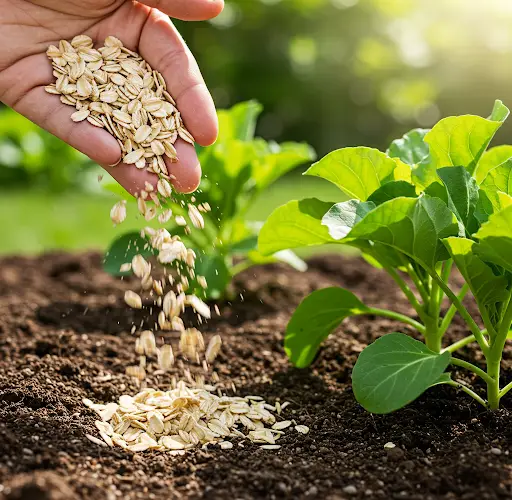Homemade Organic Fertilizer for Houseplants Using Oatmeal
Houseplants require proper nourishment to grow actively and bloom beautifully. While commercial fertilizers are widely available, homemade organic fertilizers offer a natural and cost-effective alternative. One of the simplest and most effective organic fertilizers can be made using oatmeal, which provides essential nutrients such as nitrogen, potassium, phosphorus, magnesium, iron, and other trace elements beneficial for plant growth. This homemade fertilizer is particularly well-suited for plants such as geraniums, pelargoniums, petunias, violets, and roses.
Benefits of Oatmeal as a Fertilizer
Oatmeal is rich in essential nutrients that promote healthy plant development. Here are some key benefits of using oatmeal-based fertilizer:
- Nitrogen Boost: Nitrogen is crucial for leaf and stem growth, ensuring lush green foliage.
- Phosphorus for Root Strength: Phosphorus plays a key role in developing strong roots, aiding in overall plant stability and nutrient absorption.
- Potassium for Flowering: This element enhances the quality of flowers and increases resistance to diseases.
- Magnesium and Iron for Chlorophyll Production: These nutrients contribute to the process of photosynthesis, ensuring vibrant green leaves.
- Improved Soil Microorganism Activity: The organic matter in oatmeal supports beneficial microorganisms that improve soil fertility.
How to Prepare Oatmeal Fertilizer
Making this organic fertilizer is simple and requires only a few basic ingredients and steps. Follow the instructions below to prepare a nutrient-rich infusion that will promote plant health.
Ingredients:
- ½ cup of oatmeal (expired or inexpensive oats can be used)
- 1 liter of warm water
- A glass jar with a lid
Preparation Steps:
- Pour half a cup of oatmeal into a clean glass jar.
- Add one liter of warm water to the jar.
- Close the jar with a lid and shake well to mix the contents.
- Let the mixture sit in a warm place for 3-4 days to ferment and release nutrients.
- After the infusion period, strain the mixture if desired to remove solid particles.
- Dilute the resulting liquid in a ratio of 1:4 by adding four liters of settled water.
How to Use Oatmeal Fertilizer
Once the fertilizer is prepared and diluted, it can be applied directly to the soil of houseplants. Follow these guidelines for best results:
- Application Frequency: Use this fertilizer once every 10-14 days.
- Method: Pour the diluted solution under the root of the plants, ensuring the soil absorbs the nutrients properly.
- Combination with Other Fertilizers: To achieve balanced nutrition, alternate this oatmeal-based fertilizer with other organic fertilizers such as banana peel infusion, eggshell powder, or compost tea.
Expected Results and Benefits
Regular use of this oatmeal fertilizer can help restore weak or struggling plants, enhancing their overall health and appearance. Some noticeable improvements include:
- Increased leaf growth and greener foliage
- Stronger stems and roots
- More abundant and vibrant blooms
- Enhanced resistance to diseases and environmental stressors
Additional Tips for Best Results
- Always use settled or dechlorinated water when diluting the fertilizer to prevent harmful chemicals from affecting plant health.
- Store any leftover fertilizer in a cool, dark place and use it within a week for maximum effectiveness.
- Monitor plant response to the fertilizer, adjusting application frequency as needed.
- Avoid over-fertilization, as excessive nutrients can lead to leaf burn or other growth issues.
Conclusion
Homemade oatmeal fertilizer is an excellent way to nourish houseplants naturally while reducing waste and minimizing reliance on synthetic fertilizers. With its rich nutrient content and easy preparation, this organic solution can promote vigorous plant growth, lush foliage, and beautiful flowers. By incorporating this natural fertilizer into a regular plant care routine, houseplants can thrive and flourish for years to come.



